
Mushrooms in Nebraska Nebraska Forest Service
The mushroom diagram typically highlights the various parts of a mushroom, including the cap, gills, stem, and mycelium. Each component plays a vital role in the growth and reproduction of the mushroom. The Cap The cap, also known as the pileus, is the topmost part of the mushroom.

Diagram showing parts of mushroom whole plant Vector Image
Start studying Parts of a mushroom. Learn vocabulary, terms, and more with flashcards, games, and other study tools.

Mushroom Anatomy Understanding Caps + Stems Minnesota R&R Cultivation
A mushroom has two parts. The part underground is called the mycelium. It gets food for the mushroom. Sometimes it dies quickly, but if it gets enough food it may live for hundreds of years. The umbrella-shaped body of a mushroom that we can see is called the fruit or sporophore. It only lives for a few days.

Parts of a mushroom — Science Learning Hub
My Cart Mushroom Anatomy: A Deep Dive Into the Parts of a Mushroom Written by Real Mushrooms Describing mushroom anatomy is not always easy because there are so many unique types of mushrooms. Mushrooms are not a plant or an animal, but a species all their own that belongs to the fungi kingdom.
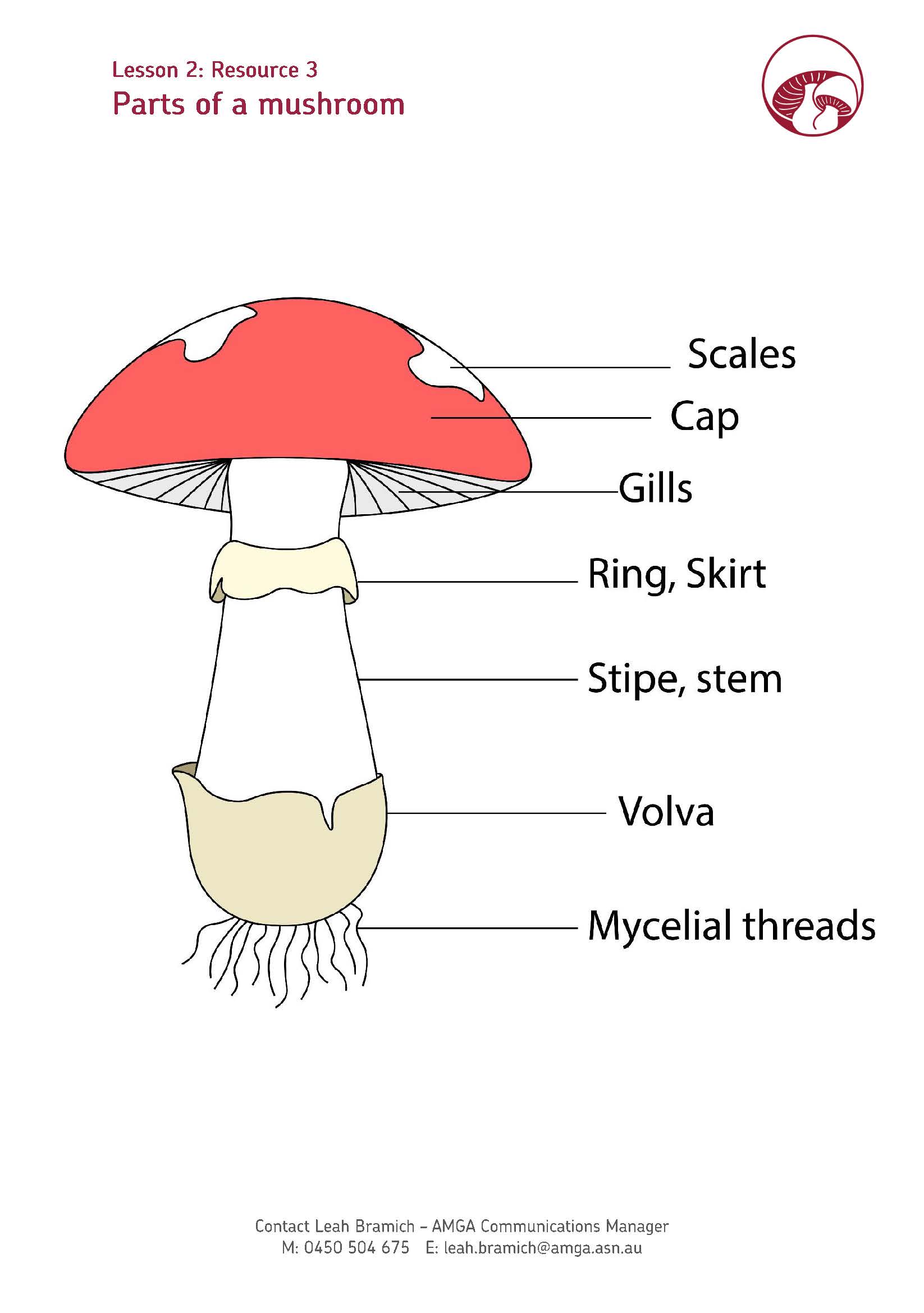
Lesson Plans Australian Mushroom Growers
This guide focuses on the different parts in the anatomy of mushrooms like lion's mane, morel, shiitake, turkey tail, chanterelle, maitake, and more. No two mushrooms are alike; this is a guide to the general physical mushroom structure. The basic mushroom anatomy Anatomy of a Mushroom A mushroom is made up of eight common parts.

Sunlight and Shadow A Shortcut to Mushrooms
Mushrooms have two main parts: the underground mycelium for growth and nutrient absorption, and the above-ground sporophore for reproduction. The cap protects the mushroom's gills and spores from environmental factors. Gills are where spores are produced and can vary in shape, aiding in species identification.
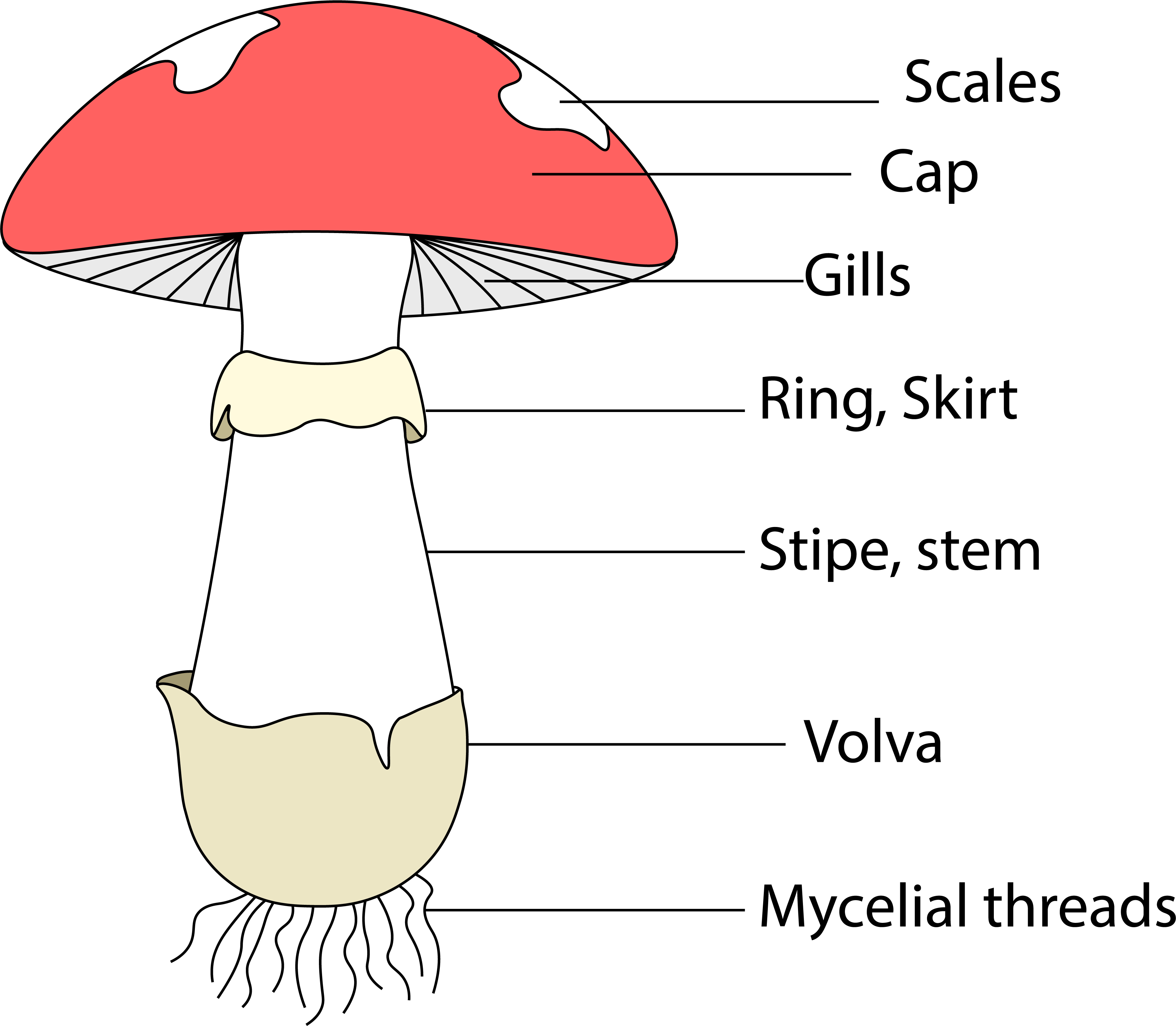
What are “Magic Mushrooms?” Psychedelic Science Review
The anatomy of a mushroom is a fascinating subject that we can learn and experience each part of the mushroom - the mushroom stem or stalk, the mushroom cap, fruiting body, the ring, mushroom mycelium network and mushroom spores. Read on as we discuss all parts of a mushroom and how their unique benefits support human health and the planet.
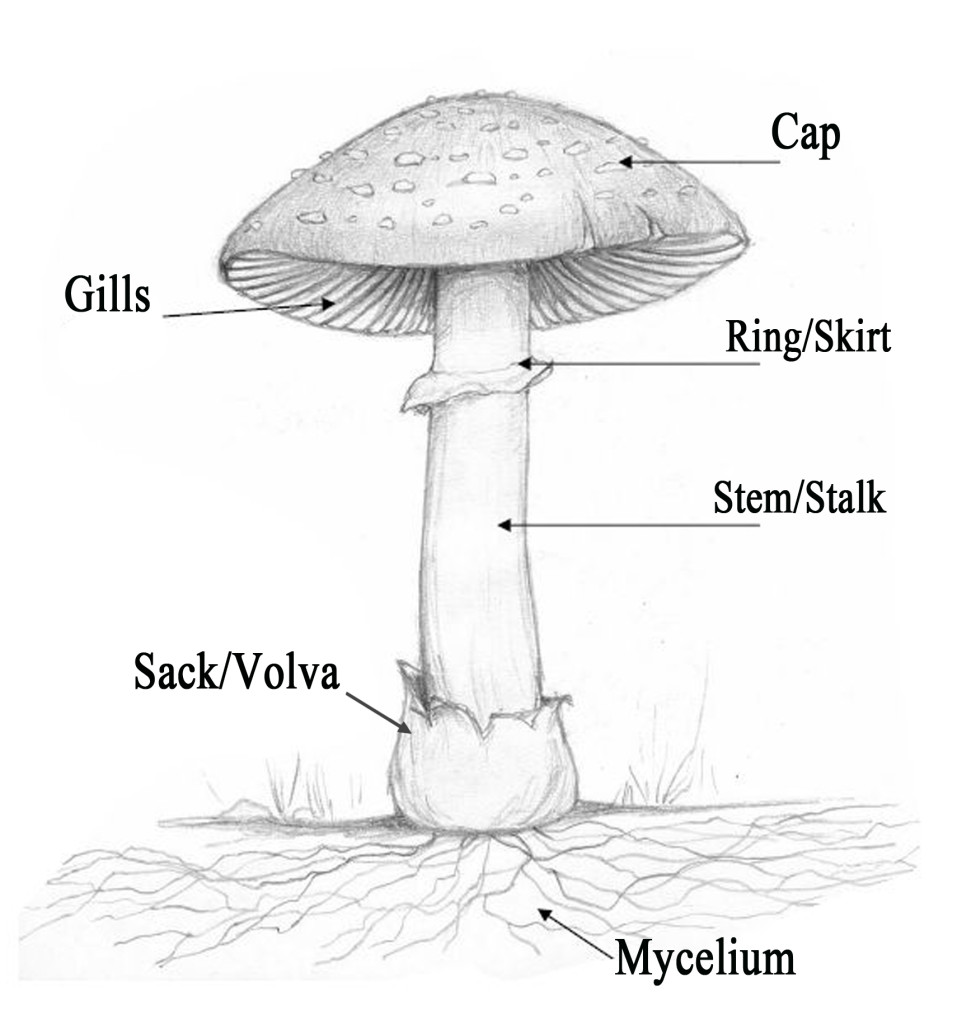
Mushroom Identification Basics Yellow Elanor
Biology diagram. Structure parts, cap, skirt, spores, ring, lamella, pileus, stem, gills volva, mycelium, hyphae, fungus. Toadstool, mush room diagram. Vector
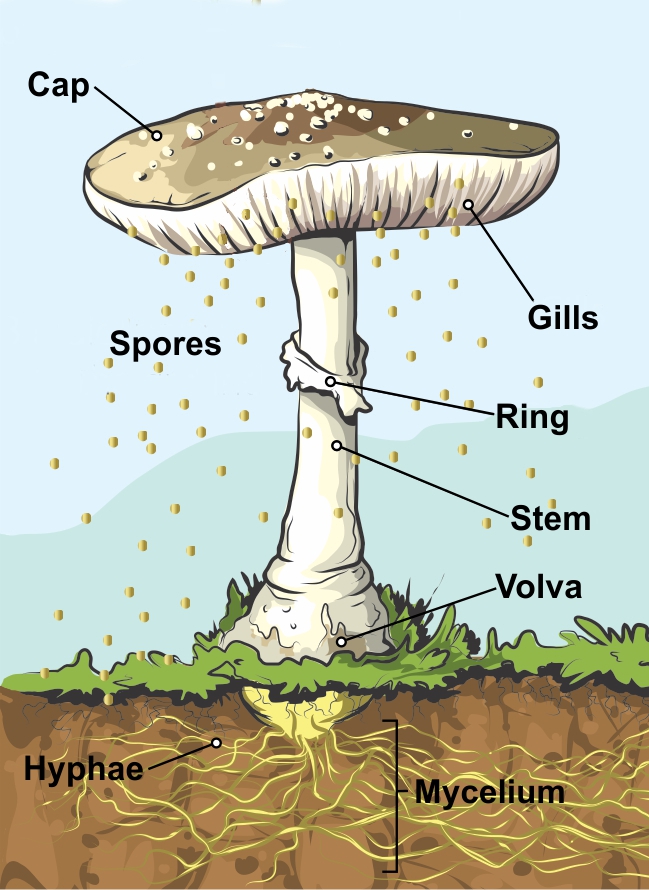
A Guide to All the Parts of a Mushroom GroCycle
Gills (Lamellae) - A series of radially arranged (from the center) flat surfaces located on the underside of the cap. Spores are made in the gills. Mycelial threads - Root-like filaments that anchor the mushroom in the soli. Ring (Annulus) - A skirt-like ring of tissue circling the stem of mature mushrooms.

Mushroom Diagram DIY
There are two main parts to a mushroom fungus; An above-ground fruiting body or sporophore and the underground mycelium. Mycelium Mycelium forms the underground part of the fungus that we seldom see. It's a vast, complex network of cells that form thin fibers, like plant roots, and spread under the forest floor in search of nutrients.
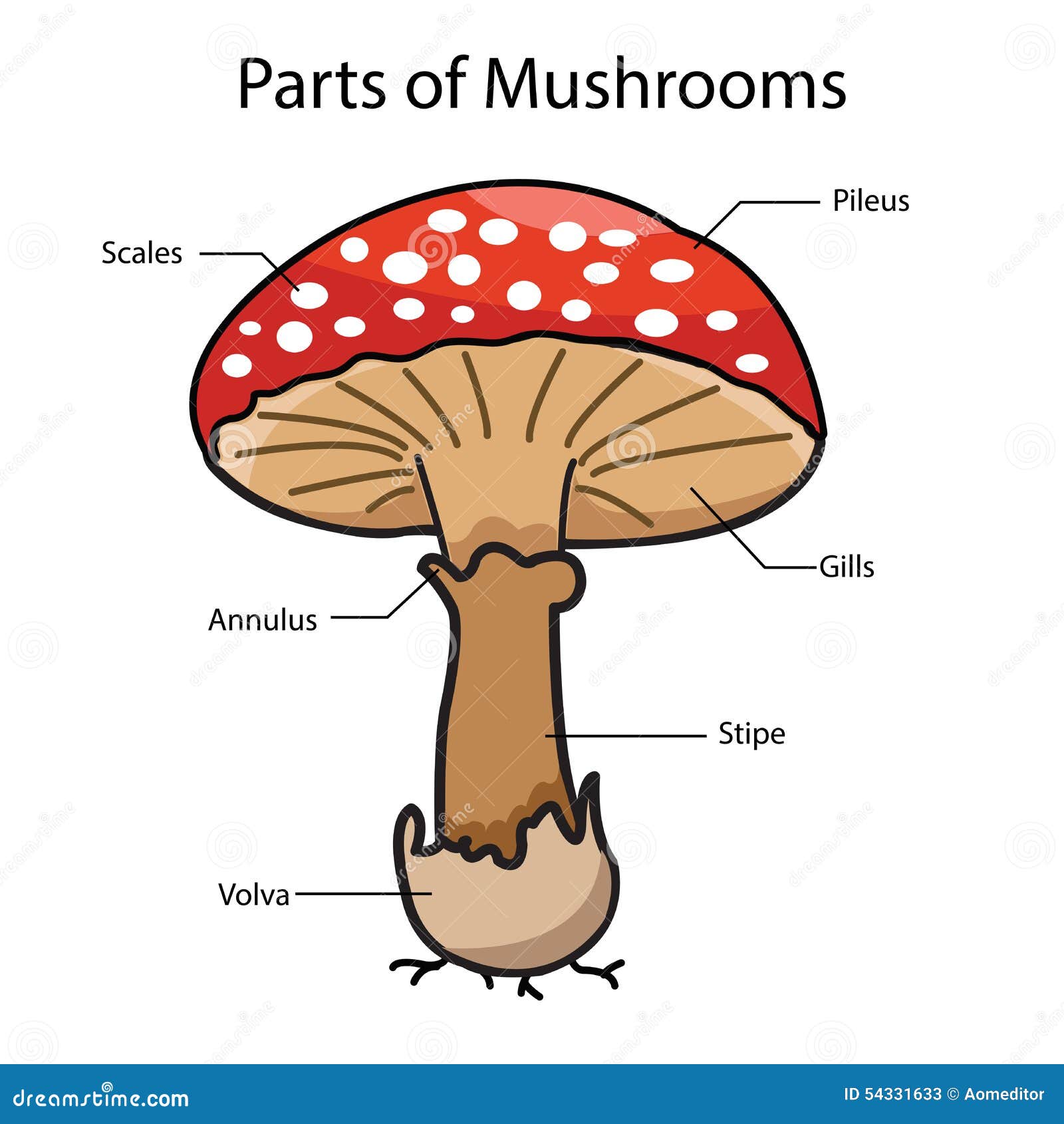
Parts Of A Mushroom Diagram Wiring Diagram Database
The cap, the stem, the gills, veil, and all the other little parts of a mushroom that make fungi are so fascinating we'll be going to be the topic of today's entry on the blog. Here's what we'll discuss together today regarding mushroom identification and mushroom anatomy: Revisiting the basics to set the stage: what exactly a fungi.
Anatomy of a mushroom. r/Infographics
Cap: This is the part that gives the fungi its umbrella shape. The cap comes in a variety of colors, including white, brown, and yellow. In the same way that umbrellas protect us from the heat of the sun, rain, and other harsh weather conditions, the mushroom cap protects the pores or gills where mushroom spores are produced. And what are spores?

Pin by Archie's Press on Archie's Press Mushroom diagram, Stuffed
Mushroom anatomy When thinking about a mushroom's anatomy, most people would automatically think of a cap and a stem. But there is so much more to a mushroom's anatomy than just that. The anatomy of a mushroom consists of gills, ring, spores, stem, volva, bulb, mycelium, and the cap.
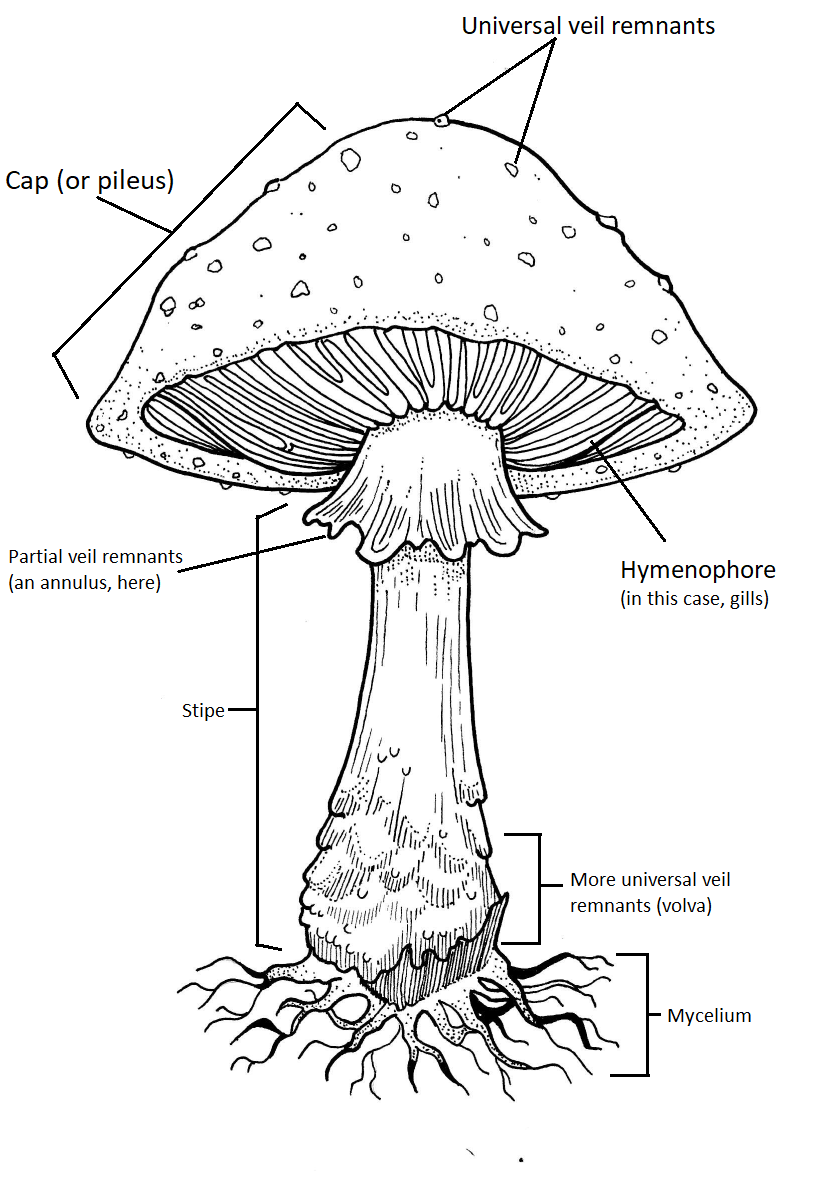
2.3.5 Macrofungi Biology LibreTexts
The anatomy of a mushroom consists of several parts that play crucial roles in its growth, reproduction, and nutrient absorption. Some of these parts include the cap, gills, stem, and mycelium. The cap, or pileus, is the most recognizable part of the mushroom and serves as a protective covering for the delicate gills underneath.

Mushroom Diagram Interactive worksheet
Caps, scales, gills, rings, stems, volvas, and other parts of a mushroom can all be seen by simply looking at the fungus. Also known as the fruiting body, the cap is the uppermost part of the mushroom and is typically covered in scales. Beneath the cap, you will find the gills, which are thin plates that produce spores.

Anatomy of a Mushroom — Jamie Green
Alex Dorr September 29, 2022 Mushrooms are found in many different shapes and sizes. In this post, you'll learn everything there is to know about mushroom anatomy. Mushrooms are incredibly nutritious fruiting bodies of fungi that can have health benefits beyond the nutrients they provide for our bodies.